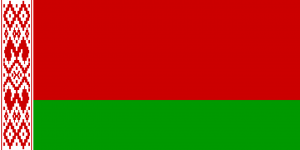Difference between revisions of "Language/Belarusian/Grammar/Past-Tense"
m (Quick edit) |
m (Quick edit) |
||
| Line 119: | Line 119: | ||
[[Category:0-to-A1-Course]] | [[Category:0-to-A1-Course]] | ||
[[Category:Belarusian-0-to-A1-Course]] | [[Category:Belarusian-0-to-A1-Course]] | ||
==Related Lessons== | |||
* [[Language/Belarusian/Grammar/Adverbs|Adverbs]] | |||
* [[Language/Belarusian/Grammar/Future-Tense|Future Tense]] | |||
* [[Language/Belarusian/Grammar/Adjectives|Adjectives]] | |||
* [[Language/Belarusian/Grammar/Cases|Cases]] | |||
* [[Language/Belarusian/Grammar/Give-your-Opinion|Give your Opinion]] | |||
* [[Language/Belarusian/Grammar/Gender-Agreement|Gender Agreement]] | |||
* [[Language/Belarusian/Grammar/Gender|Gender]] | |||
* [[Language/Belarusian/Grammar/Plurals|Plurals]] | |||
* [[Language/Belarusian/Grammar/Prepositions|Prepositions]] | |||
* [[Language/Belarusian/Grammar/Pronouns|Pronouns]] | |||
{{Belarusian-Page-Bottom}} | {{Belarusian-Page-Bottom}} | ||
Revision as of 21:46, 14 March 2023
As a Belarusian language teacher with over 20 years of experience, I know that learning the past tense is a crucial step in becoming a proficient Belarusian speaker. In this lesson, we will cover the basics of past tense conjugation for Belarusian verbs.
Introduction
The past tense in Belarusian is used to describe a past event or action. It is formed by adding a suffix to the verb stem. The exact suffix used depends on the gender and number of the subject performing the action.
To form the past tense, take the verb stem and add the appropriate suffix:
- For masculine singular verbs, add "-ў" to the stem.
- For feminine singular verbs, add "-ла" to the stem.
- For neuter singular verbs, add "-ла" to the stem.
- For plural verbs, add "-лі" to the stem.
It is worth noting that there are some irregular verbs that do not follow this pattern. However, for the purposes of this lesson, we will stick to regular verbs.
Let's look at some examples:
| Belarusian | Pronunciation | English |
|---|---|---|
| я спел | ya spehl' | I sang |
| ты спявала | ty spi-ah-vah-lah | You (feminine) sang |
| ён пісаў | yohn pee-saw | He wrote |
| яны гаварылі | yah-nyh hah-vah-ry-lee | They (plural) spoke |
As you can see, the past tense verb endings differ depending on the gender and number of the subject, which can be challenging to remember. However, with practice, you'll get the hang of it.
Conjugation of Past Tense Verbs
To conjugate a verb in the past tense, you need to know the stem of the verb. Below are the past tense verb endings for regular Belarusian verbs in each of the four gender/number categories.
Masculine Singular Past Tense
To conjugate a masculine singular verb in the past tense, add "-ў" to the verb stem.
Here is an example with the verb "вучыць" (to teach):
| Belarusian | Pronunciation | English |
|---|---|---|
| я вучыў | ya vu-chih-oo | I taught |
| ты вучыў | ty vu-chih-oo | You (masculine) taught |
| ён вучыў | yohn vu-chih-oo | He taught |
Feminine Singular and Neuter Singular Past Tense
To conjugate a feminine or neuter singular verb in the past tense, add "-ла" to the verb stem.
Here is an example with the verb "працаваць" (to work):
| Belarusian | Pronunciation | English |
|---|---|---|
| я працаваўла | ya pra-tsah-vah-oo-lah | I worked |
| ты працаваўла | ty pra-tsah-vah-oo-lah | You (feminine) worked |
| яно працаваўла | yah-no pra-tsah-vah-oo-lah | It (neuter) worked |
Plural Past Tense
To conjugate a plural verb in the past tense, add "-лі" to the verb stem.
Here is an example with the verb "гаварыць" (to speak):
| Belarusian | Pronunciation | English |
|---|---|---|
| мы гаварылі | my hah-vah-ry-lee | We spoke |
| вы гаварылі | vy hah-vah-ry-lee | You (plural) spoke |
| яны гаварылі | yah-nyh hah-vah-ry-lee | They (plural) spoke |
With practice and repetition, you'll be able to memorize the past tense conjugation patterns for different verbs.
Using the Past Tense
Now that you know how to conjugate verbs in the past tense, it's important to understand how to use them in context. Generally speaking, the past tense is used to describe an action that happened in the past and is now completed.
Here are some examples:
- Я вучыў беларускую мову тры гады. (I studied Belarusian for three years.)
- Ты зрабіла гарачыну для нашай вечарынкі. (You (feminine) made borscht for our party.)
- Ён зрабіў заданне для школы. (He did his homework for school.)
- Мы падарылі Бабулі кнігу пра шацярняю інтрыгу. (We gave Grandma a book about a thrilling adventure.)
- Вы зрабілі чудо сваёй працы. (You (plural) did a miracle with your work.)
- Яны адпачылі ў Мінску на перашкодзе ў сваёй падарожжы. (They rested in Minsk on their trip.)
As you can see, the past tense is used to describe completed actions in the past.
Conclusion
Learning the past tense is a crucial step in becoming a proficient Belarusian speaker. By understanding the conjugation patterns and how to use verbs in the past tense, you'll be able to communicate more effectively in Belarusian. In our next lesson, we'll cover the imperative mood in Belarusian. Stay tuned!
Related Lessons
- Adverbs
- Future Tense
- Adjectives
- Cases
- Give your Opinion
- Gender Agreement
- Gender
- Plurals
- Prepositions
- Pronouns
